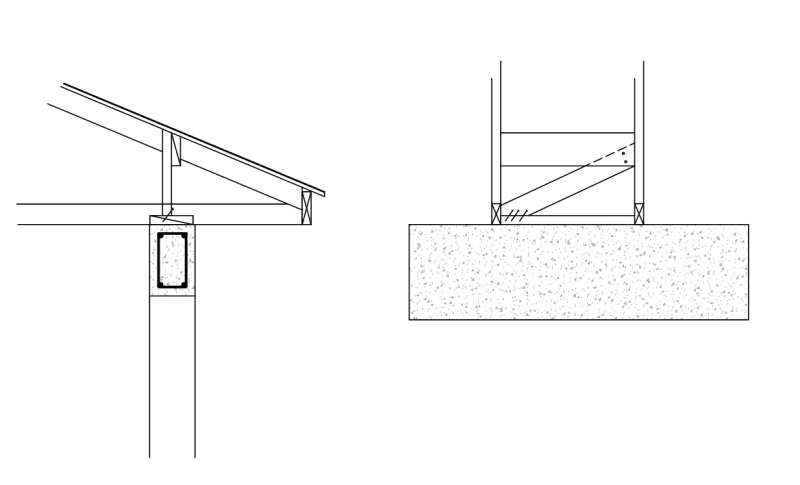struct_eeyore
Structural
How do you all connect your roof diaphragms when you have encounter tall truss heels?
Around my parts, on existing construction, I rarely if ever see any means to transfer roof diaphragm loads to shear walls below - residential jobs are notorious. I've come to accept that trusses sheathed on top and bottom are pretty much a rigid system, and whatever connections the truss heels have to walls below are sufficient (my area got hit directly by Ian 2 years ago, and I've come to think this assumption is sufficient for most cases). (This is not mentioning that for the shorter heels attic venting would be compromised)
However, I'm now dealing with a $$$ job with rather tall heels (+2'), and naturally am questioning my past practice. Do any of you out west with them big earthquakes have a different approach? I'm currently thinking of implementing the attached detail (cross bracing direction will alternate every bay, and base blocking will be tapconned in) - discussion with contractor about why this is necessary is now 100% expected.
Any feedback is appreciated.

Around my parts, on existing construction, I rarely if ever see any means to transfer roof diaphragm loads to shear walls below - residential jobs are notorious. I've come to accept that trusses sheathed on top and bottom are pretty much a rigid system, and whatever connections the truss heels have to walls below are sufficient (my area got hit directly by Ian 2 years ago, and I've come to think this assumption is sufficient for most cases). (This is not mentioning that for the shorter heels attic venting would be compromised)
However, I'm now dealing with a $$$ job with rather tall heels (+2'), and naturally am questioning my past practice. Do any of you out west with them big earthquakes have a different approach? I'm currently thinking of implementing the attached detail (cross bracing direction will alternate every bay, and base blocking will be tapconned in) - discussion with contractor about why this is necessary is now 100% expected.
Any feedback is appreciated.

